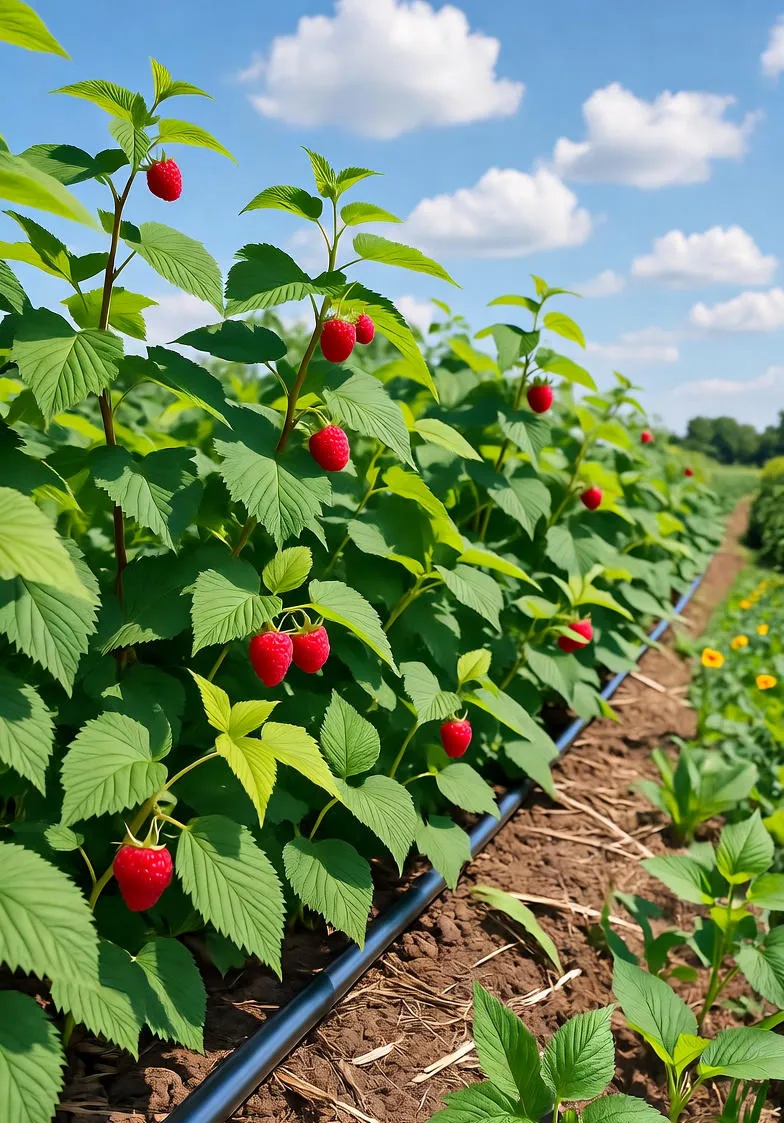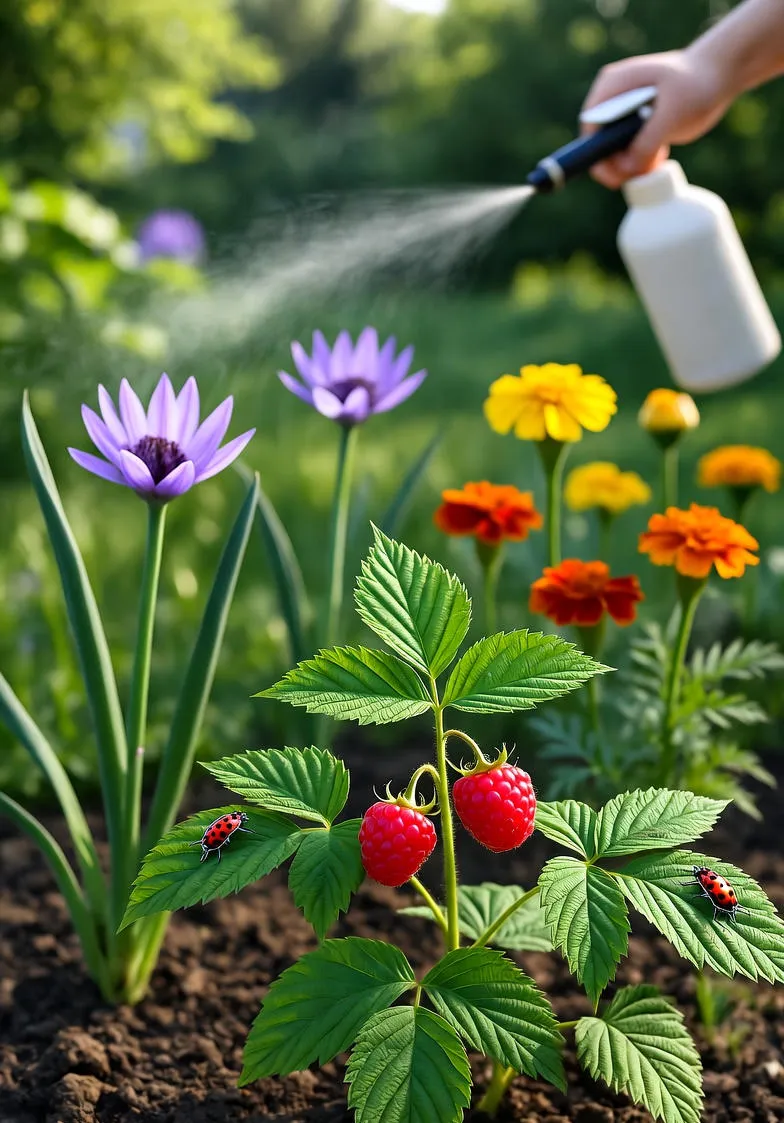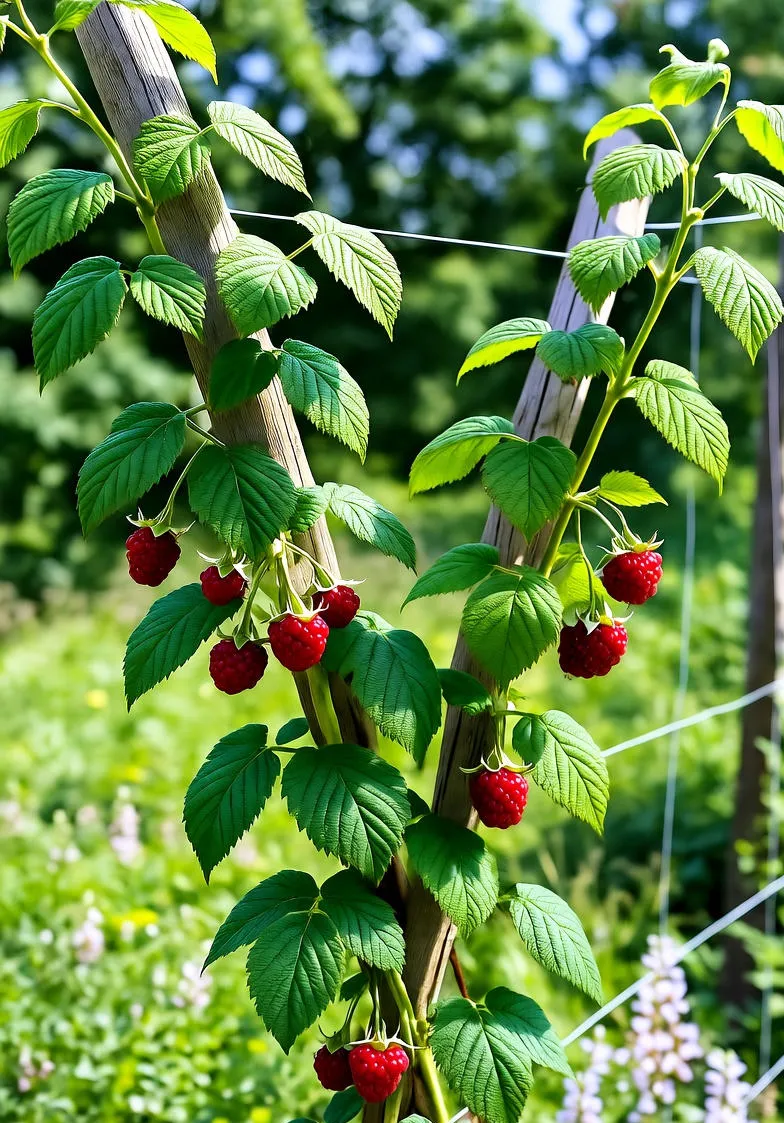Sustainable Secrets: Mastering Organic Raspberry Farming Techniques
Unlock the art of organic raspberry farming with proven techniques for site selection, planting, pest control, and sustainable yields. Grow chemical-free berries bursting with flavor and nutrition.

Introduction to Organic Raspberry Farming
Organic raspberry farming represents a harmonious blend of tradition and innovation, allowing growers to produce vibrant, nutrient-rich berries without synthetic chemicals. Raspberries, prized for their tangy-sweet flavor and versatility in culinary applications, thrive under careful stewardship of the land. This approach not only yields healthier produce but also fosters biodiversity and long-term soil vitality. As demand for organic fruits surges, mastering these techniques empowers both commercial farmers and backyard enthusiasts to contribute to a sustainable food system.
At its core, organic raspberry cultivation emphasizes prevention over cure, integrating natural processes to support plant health. From selecting the right site to implementing integrated pest management, every step is designed to mimic nature's balance. Whether you're establishing a new patch or refining an existing one, these methods can boost yields while minimizing environmental impact. Let's delve into the essential practices that define successful organic raspberry farming.
Site Selection and Soil Preparation
Choosing the optimal site is the foundation of thriving raspberry plants. Raspberries flourish in full sun, receiving at least six to eight hours of direct sunlight daily, which promotes robust growth and sweet fruit development. Well-drained soil is non-negotiable; these shallow-rooted perennials detest waterlogged conditions that invite root rot. Aim for a gentle slope of 3-4% to enhance air drainage and prevent frost pockets, particularly in north-facing orientations to shield against harsh winds.
Soil pH should hover between 6.0 and 6.5 for optimal nutrient uptake. Conduct thorough soil tests prior to planting to assess pH, nutrient levels, organic matter content, and potential nematode presence. Avoid sites previously occupied by solanaceous crops like tomatoes, potatoes, or peppers, as they can harbor Verticillium wilt—a persistent fungal foe. Instead, rotate with non-host crops such as grains or grasses for at least five to eight years to break disease cycles.
Preparation begins one to two years in advance with cover cropping. Sow biofumigant species like sudangrass, rapeseed, or marigolds to suppress soilborne pathogens and nematodes while boosting organic matter. These green manures, when incorporated, release natural compounds that deter pests and improve soil structure. For heavy clay soils, raised beds elevated 10-14 inches can transform marginal land into productive ground, ensuring roots access oxygen and warmth.
- Test for nematodes: Use summer-moist samples to detect dagger or root-knot species that cause crumbly berry syndrome.
- Incorporate organic matter: Add compost or well-rotted manure to reach 4-6% organic matter, enhancing microbial activity and water retention.
- Establish buffer zones: Maintain 20-250 feet from conventional farms to prevent drift, using hedgerows or ditches as natural barriers.
This proactive groundwork sets the stage for resilient plants capable of producing for 10-15 years.
Variety Selection for Organic Success
Selecting the right raspberry varieties is crucial for organic systems, where chemical crutches are absent. Opt for cultivars bred for disease resistance and vigor, tailored to your climate zone (typically USDA 3-9). Summer-bearing (floricane) types like 'Prelude', 'Killarney', or 'Nova' deliver one heavy crop in early to mid-summer, while everbearing (primocane) varieties such as 'Heritage', 'Caroline', or 'Polka' offer two harvests—late summer and fall—extending your season.
For black raspberries, 'Bristol' or 'Jewel' stand out for their hardiness against anthracnose and cane blight. Purple hybrids like 'Royalty' add color diversity and resistance to powdery mildew. Prioritize virus-indexed, tissue-cultured stock from certified organic nurseries to sidestep mosaic viruses or bushy dwarf disease. In high-density systems, compact growers like 'Joan J' maximize space without sacrificing yield.
Consider local challenges: In humid regions, mildew-resistant picks like 'Autumn Britten' shine; for colder climates, hardy options such as 'Boyne' endure winters. Always source untreated plants, as non-organic stock is permissible only if organics are unavailable, per USDA NOP guidelines.
Planting Techniques for Strong Establishment
Planting timing aligns with dormancy: early spring for bare-root stock or fall in milder zones to allow root establishment before fruiting stress. Space red raspberries 24 inches apart in rows 8-12 feet wide, forming hedgerows for efficient management. Black varieties need 30 inches between plants to accommodate their arching canes.
Dig holes deep enough to bury roots without crowding the crown, then firm soil for contact. Immediately after planting, apply 4 inches of clean straw mulch to conserve moisture, suppress weeds, and moderate soil temperature during the critical first year. Water deeply to settle the soil, aiming for consistent moisture without saturation.
In protected culture like high tunnels, narrower rows (7-8 feet) and closer spacing boost yields by 20-30%, shielding plants from rain splash and extending the harvest window. For container systems, use 5-7 gallon pots with soilless mixes amended with compost, allowing portable control over microclimates.
- Pre-plant soak: Hydrate bare-root canes overnight in water to revive them.
- Amend planting holes: Mix in bone meal for phosphorus to spur root growth.
- Isolate new beds: Keep 150-200 yards from established or wild patches to curb virus transmission.
Nutrient Management and Soil Fertility
Organic fertility relies on a balanced nitrogen budget, drawing from soil organic matter (releasing ~20 lbs N per 1% content), manure (50% available first year), and compost (10-25%). Annual soil and tissue tests guide applications: Target leaf N at 2.0-3.0%, P 0.25-0.40%, K 1.50-2.50%.
Apply lime in fall to adjust pH upward, or sulfur downward, based on buffer index. For nitrogen, use blood meal or soybean meal at 35-55 lbs/acre in year one, split into pre-plant and side-dress. Phosphorus comes from rock phosphate or bone meal; potassium from Sul-Po-Mag or wood ash. Avoid excess N, which invites succulent growth prone to pests.
Incorporate cover crops like clover for natural fixation, rotating annually to replenish without depletion. Foliar feeds with fish emulsion provide quick boosts during bloom, while mycorrhizal inoculants enhance uptake in low-fertility soils.
Irrigation and Water Conservation
Raspberries demand 1-2 inches of water weekly, totaling 20-25 inches seasonally, focused on the root zone to prevent berry cracking or dilution. Drip irrigation excels here, delivering 30% less water than overhead systems while slashing disease risk by keeping foliage dry.
Integrate soil moisture sensors for precision scheduling, irrigating when top 6 inches dry out. Mulch rings around plants cut evaporation by 50%. Test irrigation water for pH (<7.0) and salts (<1.0 ds/m) to safeguard roots; potable sources during bloom ensure food safety.
Weed Control and Mulching Strategies
Weeds rob resources and harbor pathogens, so vigilance is key. Pre-plant tillage buries seeds, followed by flame weeding or organic contact herbicides like vinegar-based Axxe for spot treatment. In rows, 3-4 inches of straw or wood chips mulch suppresses 80% of weeds while decomposing into humus.
Between rows, mow permanent sod of fescue or ryegrass to a 4-inch height, fostering beneficial insects. Cover crops like vetch outcompete invasives during off-seasons. Avoid persistent perennials like quackgrass by site scouting; hand-pulling young weeds maintains cleanliness without disturbing roots.
- Biodegradable fabrics: Use for new beds, cutting holes for canes.
- Allelopathic covers: Ryegrass releases compounds inhibiting weed germination.
- Timing: Mulch post-planting, refreshing annually but removing after year one on heavy soils to avert rot.
Pruning, Trellising, and Canopy Management
Pruning sculpts productive architecture, enhancing airflow and light penetration. For summer-bearing reds, remove spent floricanes post-harvest, leaving 4-6 vigorous primocanes per foot. Thin to 12-18 inches wide rows in late winter. Everbearers mow to ground in early spring for dual crops.
Black raspberries tip primocanes at 24-30 inches to spur laterals, pruning fruited canes entirely. Trellises—simple T-posts with wires at 2, 3, and 4 feet—support hedges, preventing lodging and easing harvest. Fan out canes for even exposure, tying loosely to avoid girdling.
Summer tipping controls height, while dormant thinning removes weaklings, focusing energy on elites. This regimen yields 5,000+ lbs/acre at maturity.
Integrated Pest and Disease Management
IPM forms the organic bulwark, scouting weekly for early detection. Cultural tactics like rotation and sanitation—removing debris and rogueing infected plants—curb 70% of threats. Resistant varieties dodge powdery mildew or rust; open canopies deter gray mold.
For insects, release ladybugs against aphids or use kaolin clay barriers for beetles. Spotted wing drosophila succumbs to spinosad sprays and exclusion netting. Diseases like Phytophthora yield to raised beds and copper drenches; Botrytis to potassium bicarbonate during wet blooms.
Biopesticides—neem oils, pyrethrins, Bacillus subtilis—target specifics without broad harm. Monitor thresholds: Act on 10% aphid-infested tips or SWD trap catches exceeding 1 per 7 days.
Key IPM Tools
- Biologicals: Predatory mites for spider mites; Trichoderma for root rots.
- Physical: Row covers exclude leafhoppers; traps lure fruitworms.
- Chemical minima: OMRI-listed like Entrust for borers, applied pre-bloom.
Harvesting, Post-Harvest, and Storage
Harvest every 2-3 days at peak, picking firm berries that slip easily from receptacles—typically mornings when cool. Hand-picking preserves integrity, though lower density demands more passes. Cool immediately to 32°F in shallow flats to halt decay.
Avoid washing pre-storage; use hydrogen peroxide sanitizers for equipment. For markets, refrigerate up to 3 days; process jams or freezes extend shelf life. Prompt removal of overripe fruit thwarts sap beetles and mold.
Advanced Sustainable Practices
Beyond basics, precision tools like drone monitoring track vigor and moisture, enabling targeted interventions. Companion planting—garlic or nasturtiums—repels aphids naturally. Biodiversity boosts via hedgerows shelter pollinators, vital for 90% fruit set.
Carbon farming via biochar amendments sequesters CO2 while retaining nutrients. In tunnels, three-season extensions yield 25% more with controlled humidity, though ventilation prevents fungal spikes.
Conclusion: Reaping the Rewards of Organic Raspberry Farming
Embracing organic raspberry techniques cultivates not just berries, but a legacy of stewardship. Yields may start modest—1-2 quarts per plant—but mature patches deliver abundantly, rewarding patience with flavor-packed harvests. By prioritizing soil life, natural balances, and vigilant care, you join a movement toward resilient agriculture. Start small, observe closely, and watch your raspberries flourish in harmony with the earth.


